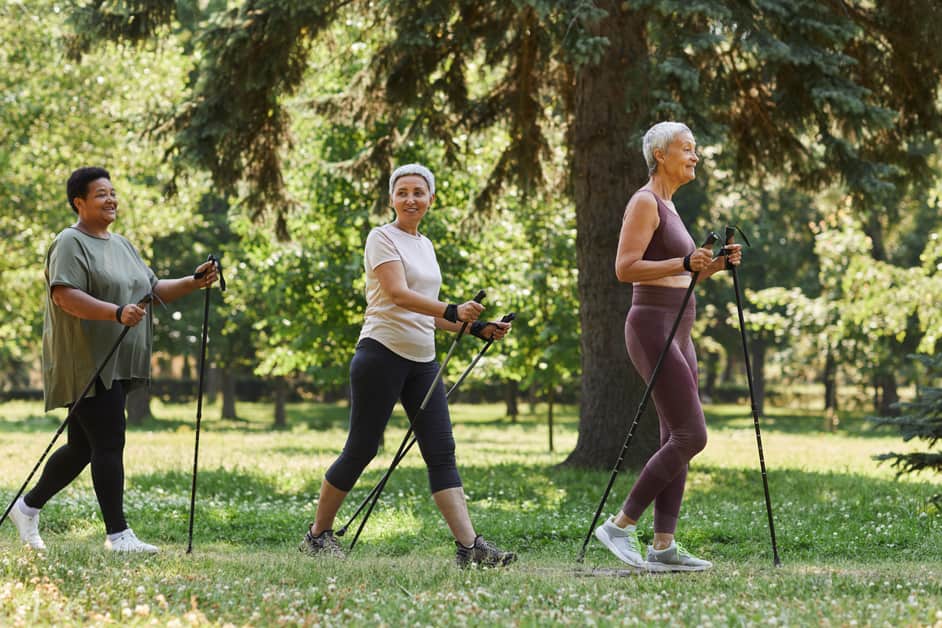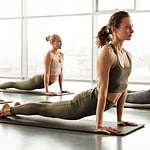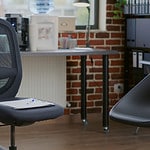Introduction
Walking is a key part of rehab for knee pain. It can help with symptoms, strength, range of motion and function. Though, it’s important to learn the right way to walk to avoid hurting yourself.
To start a rehab program, get a professional evaluation for treatment goals and tips. This can be personalised for you, and can include changes like altering shoes or using orthotics.
Remember good posture when walking. This helps ensure you use the correct muscles for correct alignment. Here are some tips on walking with knee pain:
Causes of Knee Pain
Knee pain can have many causes. Overuse, sports injuries, structure issues, and growing old are common sources. Also, bad walking habits can raise the risk. In this piece, we will talk about the various sources of knee pain, and how the right walking habits can help reduce the odds of it happening.
Overuse
Overuse of the knee joint is a top cause of knee pain. This can come from running, walking, biking, skiing, or sports like soccer. It can also result from not resting your knee long enough after an injury.
The best way to address this pain is to listen to your body and adjust your exercise routine. Start with short walks on flat terrain, and increase the distance and difficulty slowly. Stop immediately if you feel pain. If the pain persists, see a doctor. Strengthening exercises such as yoga or Pilates can help build strength around the joint, but consult with a doctor before starting a new program.
Injury
Knee pain can be caused by injuries. These can be due to overuse, falls, or direct contact with an object. Common types of knee injuries include sprains, strains, fractures, patellar dislocation, meniscus tears, and PFPS (patellofemoral pain syndrome).
If you have knee pain after a certain activity (e.g. running, jumping, lifting), stop that activity until your injury is assessed and healed. During healing, low-impact activities like walking are best, as long as there’s no intense discomfort.
When walking for rehabilitation from knee pain, it’s important to have proper technique. This includes:
- Slow, steady strides with knees slightly bent and feet heel-toeing;
- Correct posture: chest up, eyes straight ahead;
- Relaxed movements;
- Upper body relaxed;
- Increasing speed each day, so muscles can adjust.
Aging
As one gets older, knee pain can become a factor due to the wear and tear on the joints over time. The cartilage surrounding the knee joint thins, causing limited flexibility and weaker joints that are more prone to injury. Years of an active lifestyle can lead to micro-fractures in the kneecap, resulting in chronic knee pain or a bone bruise. Osteoarthritis and rheumatoid arthritis, two common joint diseases, can occur at any age, but increase with age.
It’s important to keep up regular walking as part of a healthy lifestyle. To protect against age-related knee problems, experts advise taking steps to ensure proper alignment while walking, and avoiding high-impact exercise like running or jumping. Low-impact activities like swimming or cycling are better for aging knees than running or jogging on hard surfaces. Doing stretching before and after exercise helps keep the muscles around the knees flexible and strong, minimizing the risk of injury over time.
Obesity
Carrying extra body weight can put strain on the knee joint. This can cause pain and discomfort in the knees. People who are overweight may suffer from osteoarthritis of the knee. This is when the joint becomes swollen, stiff, and hard to move. Obesity accelerates the wear and tear of the joint cartilage and ligaments. It can also increase inflammation in the body, leading to more pain.
The best way to avoid knee pain caused by obesity is to maintain a healthy weight. This can be done by:
- Exercising
- Eating healthy, like lean proteins and vegetables
- Reducing calorie intake
Speak to your doctor before making any big changes.
Walking Techniques for Pain Relief
Walking is key for rehabbing knee pain. It can help with mobility, make muscles stronger, and lessen the pain. But, you must be sure to use the right technique to get the best results.
There are some great techniques that can help ease knee pain and reduce inflammation. Let’s have a look at them!
Shorter Strides
Take shorter strides to relieve pain while walking. Short strides don’t stretch lower legs, hips and muscles as far. So, the body doesn’t work too hard. Plus, short steps help increase stability and reduce stress on joints and muscles. Also, they ensure proper weight distribution on each foot, resulting in less wear and tear.
Experiment with stride lengths to find a stride that works for comfort and speed – even if you’re walking fast.
Heel-toe Walking
Heel-toe walking is an effective way to help with knee pain and aid in recovery after an injury or surgery. When done right, it can strengthen the muscles and tendons in the lower legs and make your posture better. It’s a low-impact exercise that requires minimal equipment and can be done anywhere.
The principle is to keep contact with the ground while having light tension in the leg muscles. Start by putting your heel on the ground and roll through to the toes. Your feet should stay close to the ground for maximum stability and less stress on your joints. Good posture will help you keep balance and control each step.
- Be sure to keep your movements smooth and controlled so there are no jarring changes in direction.
- Take quick but controlled steps to reduce the impact on your joints and give yourself good footing.
- This exercise is about keeping pain away, and gradually increasing strength through improved muscle flexibility and joint health.
Short-arc Walking
Short-arc walking is a technique to help ease pain and stress in the major joints. It is done by walking slowly and keeping your back straight while making small hamstring contractions. This can strengthen the structures in the back and lower body, and provide long-term relief from hip, knee and back pain.
Short-arc walking requires moving the hips in a small arc as you walk. To get the most out of it, you should focus on contracting the glutes, hamstrings, inner thighs and anterior core muscles all at once. All the motion should be concentrated within these small segments to activate the key muscles.
You can do this exercise in any direction –
- forward
- backward
- sideways
- Rotational
– The aim is to strengthen your core muscles while unclenching the hips, knees and lower back. It also adds stability around your abdomen and helps reduce stress on ligaments and leg fatigue or discomfort from long distance activities or standing for a long time.
Partial Weight-bearing
Partial weight-bearing is a technique used to help walk with less pain. It involves reducing the amount of weight put on the hurt body part. This technique can be adjusted for each individual. It can range from no weight on the healed area to using crutches or a cane.
Partial weight-bearing, combined with other rehabilitative measures like physical therapy, helps restore normal walking patterns. It also reduces inflammation and promotes healing by keeping muscles and joints from overstressing.
The intensity of partial weight bearing depends on the person’s ability and level of pain. Physical therapists create personalized plans for each individual to ensure safety and proper gait mechanics.
Partial weight-bearing also allows people to stay independent while getting around. Pressure relief devices may be needed in addition to manual wheelchairs if there is limited sensitivity in areas that contact the seat cushion.
Other Considerations
Searching for the top walking techniques to rehabilitate knee pain? Consider the surface and shoes you wear. Both can have an effect on your treatment results. Plus, you should maintain correct posture and alignment to keep your knee in the correct spot and avoid harm.
Now let’s look closer at these walking technique points and their impact on knee pain:
Proper Footwear
The perfect cup of coffee starts with the right type of roast. But there’s more to it! You need to think about what kind of grind you need.
Blade grinders use fast-moving blades to chop beans into an uneven size. Burr grinders grind the beans to a more even consistency so all the flavor and oils are released while brewing. Choose the right grinder for your method.
The size of grind depends on what kind of coffee preparation you’re using. From coarse to extra fine, the grind size varies. French press coffees need a course grind, while espresso needs extra-fine. Other coffeemakers may need a combo grind size. Experiment and enjoy!
Appropriate Clothing
When picking clothing to wear while roasting coffee, it’s essential to remember that the beans and air can get really hot. Natural fibers are best. Cotton, silk, or linen shirts and pants should be worn at a roasting facility. Nylon or polyester should be avoided as they don’t breathe as well and keep heat longer. Wear closed-toed shoes, ideally leather with well-ventilated soles.
Additionally, aprons or smocks can protect clothes from sparks from spilled beans or dripping oil. Cotton gloves can help stop transferring roaster heat in cases of accidental contact with the equipment.
Warm-up and Cool-down Exercises
Before roasting coffee, it’s essential to do warm-up & cool-down exercises. These pre- and post-roast practices will help the roast go smoothly.
- Warm-up: Run the roaster empty on low heat for 2 mins before adding beans. This will evenly distribute the heat.
- Cool-down: When finished, turn off the roaster & let it sit for 15 mins. This will let the residual heat escape, avoiding damage to the roaster.
After roasting, let beans cool completely on a flat tray before packaging. This releases any moisture and helps ensure optimal flavor when brewing.
Conclusion
In conclusion, walking is great for relieving knee pain. Before starting or changing an exercise or rehabilitation program, always consult your doctor. Walking correctly helps your body stay aligned and strengthens supporting muscles. It protects your knee from more harm. Listen to your body. If an exercise causes more pain, stop and talk to a physician as it may be something serious.
With these tips, you can reduce your knee pain and adopt healthier habits for physical activity:
- Consult your doctor before starting or changing an exercise or rehabilitation program.
- Walk correctly to help your body stay aligned and strengthen supporting muscles.
- Protect your knee from more harm.
- Listen to your body. If an exercise causes more pain, stop and talk to a physician.
Frequently Asked Questions
Q1. How can I reduce knee pain when walking?
A1. The best way to reduce knee pain when walking is to focus on proper walking technique. Be mindful of your posture and take short, light steps. If possible, try to walk on even surfaces and wear supportive shoes.
Q2. What is the best type of exercise for knee pain rehabilitation?
A2. The best type of exercise for knee pain rehabilitation is low-impact activities like swimming, biking, and tai chi. These exercises help strengthen the muscles around the knee joint, reduce stress on your knee, and improve your range of motion.
Q3. Are there any tips for maintaining good knee health?
A3. Yes, there are several tips for maintaining good knee health. Make sure to warm up before any physical activity. Also, avoid activities that involve high-impact on the knee joint. Lastly, stay active and build up strength in the muscles around the knee.





